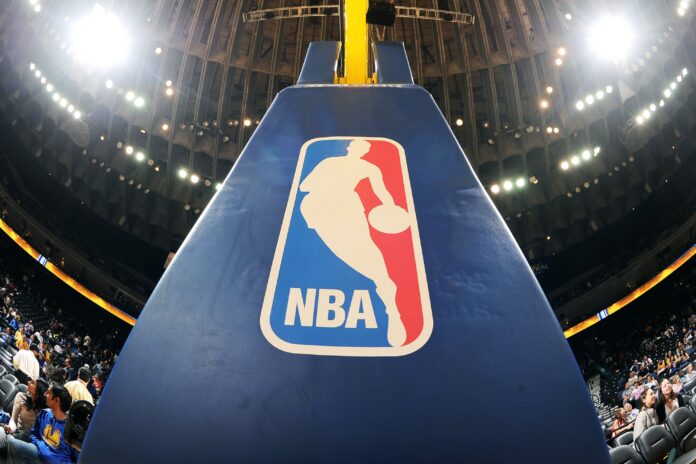
While it’s not quite as popular as the NFL, the NBA comes close. With 30 franchises that are all valued at over $1 billion and some worth as much as $7 billion, the NBA is a massive economic entity with huge influence over the rest of the economy. With the introduction of sports betting, which is now legal in dozens of states, the NBA is becoming even more influential. Let’s take a closer look at some of the different ways the NBA asserts its economic power and what the business side of the league looks like.
NBA Revenue Streams
Not surprisingly, the NBA has several revenue streams that allow individual teams and the league to rake in cash from multiple sources. It starts with ticket sales and other sources of revenue within each team’s arena, most notably concession sales. There are also TV deals with both national and local networks that allow fans to watch NBA games at home.
Merchandise is also another key aspect of the NBA’s revenue. This includes fans buying player jerseys and another team apparel. Just about any item with a team logo or a star player’s name on it will be a potential commodity for fans to purchase. There are also video games and various forms of digital media that bring revenue to the NBA.
Last but not least, there are advertising and sponsorship deals. With the high volume of fans visiting NBA arenas and watching games on TV, corporations know that they can get their name in front of consumers by becoming an NBA sponsor. Every NBA game, broadcast, or event has sponsors. There are also advertisements within every NBA arena for fans to see while attending games. Whether fans are in the arena or at home watching, it’s impossible for them to ignore the NBA’s advertising partners.
Player Contracts

With the growing popularity of the NBA, teams have been able to give players larger contracts. The more revenue the league generates, the more teams are allowed to spend on player contracts because the salary cap increases. During the 2018-19 season, the NBA salary cap eclipsed $100 million for the first time and continues to rise, reaching over $123 million for the 2022-23 season.
The yearly increase in the salary cap is one of the best ways for the NBA to pass increased revenue to the players. With a higher salary cap, teams are willing to give star players more lucrative deals. For instance, during the 2012-13 season, Kobe Bryant was the league’s highest-paid player, making over $30 million. A decade later, Stephen Curry was the highest-paid player in the league, making over $48 million during the 2022-23 season. That’s a significant increase in the highest NBA salary in just a 10-year period and is in line with how the league’s revenue has increased during that time.
NBA Sponsorship and Licensing
The NBA’s advertising and marketing partners are helping to fuel the increase in both revenue and player salaries. There was a watershed moment for the league in 2015 when the NBA ended its partnership with Adidas. After cutting ties with Adidas, the NBA agreed to an eight-year contract with Nike worth $1 billion. As part of the deal, Nike became the first company to have its logo on NBA jerseys.
However, while Nike has become synonymous with the NBA, it is just one of dozens of companies that have sponsorship deals with the NBA. All types of businesses have deals with the NBA, including fast-food franchises, beverage companies, sports betting platforms, insurance companies, and more. That doesn’t even include the NBA teams that have named their arenas after their primary sponsor. As a result, the NBA set a new record during the 2022-23 season by amassing $1.4 billion in sponsorship revenue, exemplifying just how high the demand is for companies to become NBA sponsors.
NBA Broadcast Rights

On top of advertising with the NBA, there is a huge demand among broadcasters to have the rights to the NBA. Keep in mind that the combination of DVR and streaming services has caused the viewership of live TV to drop over the last decade or more. However, live sporting events like NBA games have remained largely immune to that phenomenon. Therefore, broadcasters have placed special emphasis on the rights to popular sports leagues like the NBA.
In 2016, the NBA agreed to a new media rights contract with both ESPN and Turner Sports worth $24 billion over the course of a nine-year deal. As part of the deal, the NBA receives $2.6 billion annually for the right to broadcast its games, a substantial increase from the $930 million it received as part of the media rights deal signed in 2007. The current deal will mean ESPN and TNT will continue to broadcast NBA games nationally through the 2024-25 season.
When the end of the current deal approaches, the NBA will negotiate a new media rights deal that could be worth more than $5 billion per year. Several entities like Netflix and Apple that have never previously broadcast NBA games are reportedly interested in partnering with the NBA’s next media rights deal. In fact, virtually every major media outlet has expressed interest in a broadcasting partnership with the NBA, which is another example of the league’s popularity and economic influence.

Conclusion
Between sponsorships and broadcasting rights, not to mention ticket and apparel sales, the revenue the NBA continues to generate is increasing exponentially. As a result, all 30 franchises are worth over $1 billion individually. Therefore, the NBA, as a whole, is a powerful economic entity.
Equally important, there is no reason to believe this will change any time soon. With more international players than ever before, the NBA continues to grow globally, attracting fans from all corners of the world. This will only allow the league to generate more revenue in the years to come. With that revenue, player salaries and the league’s overall influence both economically and within the sports world will continue to grow as well.
















